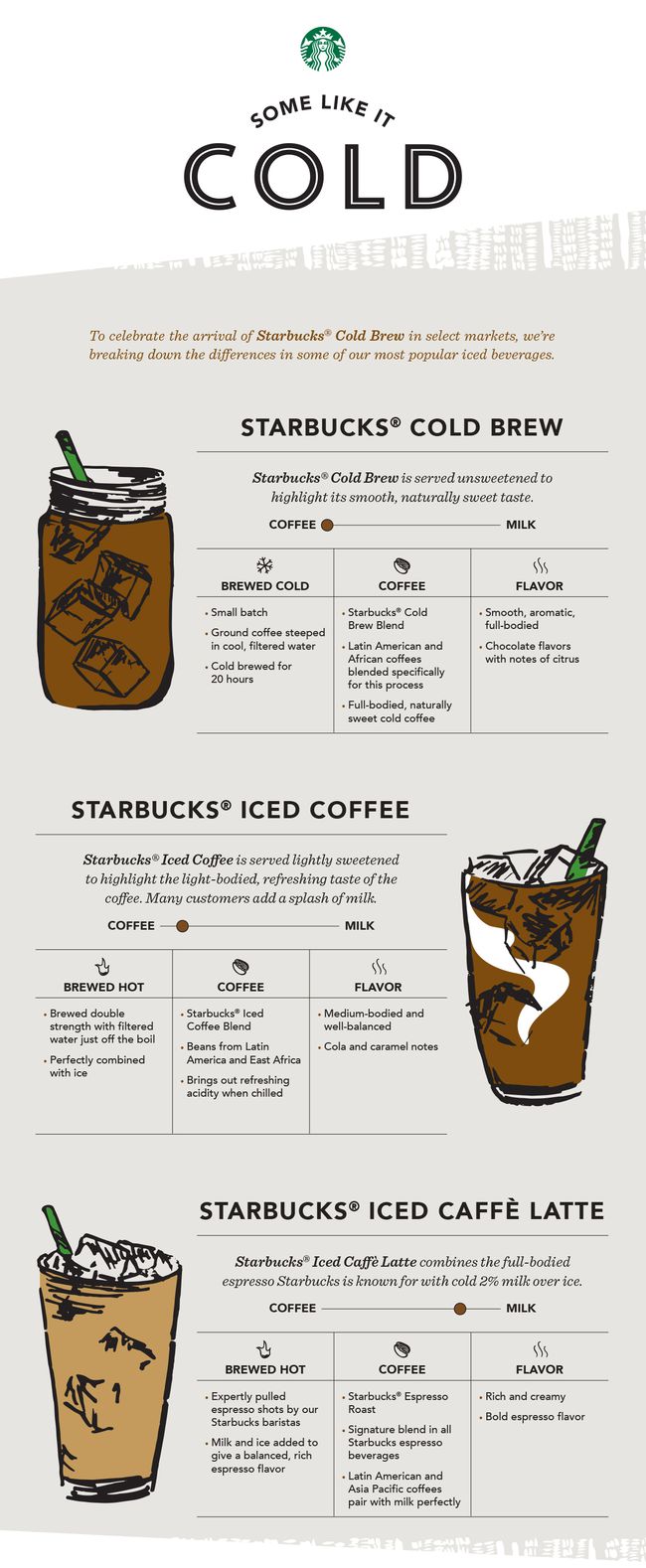If you're a patron of smaller, shall we say, hipster coffee joints, you've likely seen cold-brew coffee on the menu for quite some time. Perhaps you've even tried one of the bottled varieties at your local Whole Foods. Now, Starbucks is bringing the brew to the masses: The coffee giant officially launched their cold-brew in more than 2,800 stores today.
While cold brew isn’t new, the category has grown quickly in the past few years-yet most people still don’t quite understand the distinction from iced coffee. So what’s the difference? Iced coffee is just a regular ol’ pot of joe, sometimes brewed at double strength, which is then poured over ice instead of into a mug, explains Matt Bachmann, co-founder of New-York-based Wandering Bear Coffee Co., which has begun selling boxes of their cold-brew at fitness studios Barry’s Bootcamp and SoulCycle. Cold-brew, on the other hand, is made by steeping grounds in cold or room-temperature water for 12 to 24 hours, creating a concentrate that is then diluted with water.
Since the cold-brew process doesn’t involve heat, it extracts compounds differently, leading to a different taste than traditional iced coffee. “By leaving behind certain acids and oils that you get with heat, you’re left with a much mellower, smoother, less bitter coffee,” Bachmann says. Plus, the lengthy cold-brew process extracts different chemicals that produce a bolder, richer, and sweeter flavor. “Generally, it can be a nutty, chocolately, raw cacao flavor.” (Starbucks reported in their press release that, for their cold-brew, 20 hours was the “right balance of sweetness with citrusy and chocolate notes.”)

Since it requires both more coffee and more time to make, cold-brew does come at a higher price ($3.25 versus $2.65 for a Starbucks grande), but iced coffee lovers may consider forking over the extra cash: Since it doesn't have the biting flavor of traditional coffee, many fans choose to drink cold-brew straight, which means it doesn't need to be doused with high-calorie creamers or flavored syrups. And since it has much less acid, it's easier on your digestive system. Plus, it wins in one of the most crucial categories of coffee: Cold-brew has much higher caffeine content, without the added sugar of an energy drink. While the buzz varies depending on how much water is added in the dilution process, a cup of cold-brew coffee can contain up to twice the amount of caffeine as an average brew (so, chances are, you'll need a whole lot less of it to feel the effects you're used to!).
It’s also pretty easy for people to make at home, says Paul Haworth, buyer and head roaster for Cartel Coffee Lab in Arizona and founder of the blog Coffee Bureau. You can use a french press and just let the grounds steep overnight, or a Toddy cold-brew system, he says. The pro: You can make a batch and leave it in your fridge and it will taste the same for at least a week, he says. The con, though, is that the home brewing process takes longer than any other kind, which means you’ll need way more forethought than just throwing a Keurig in and pouring it over ice.
But hey, if you don't have quite that much patience, there's always your local Starbucks!



































